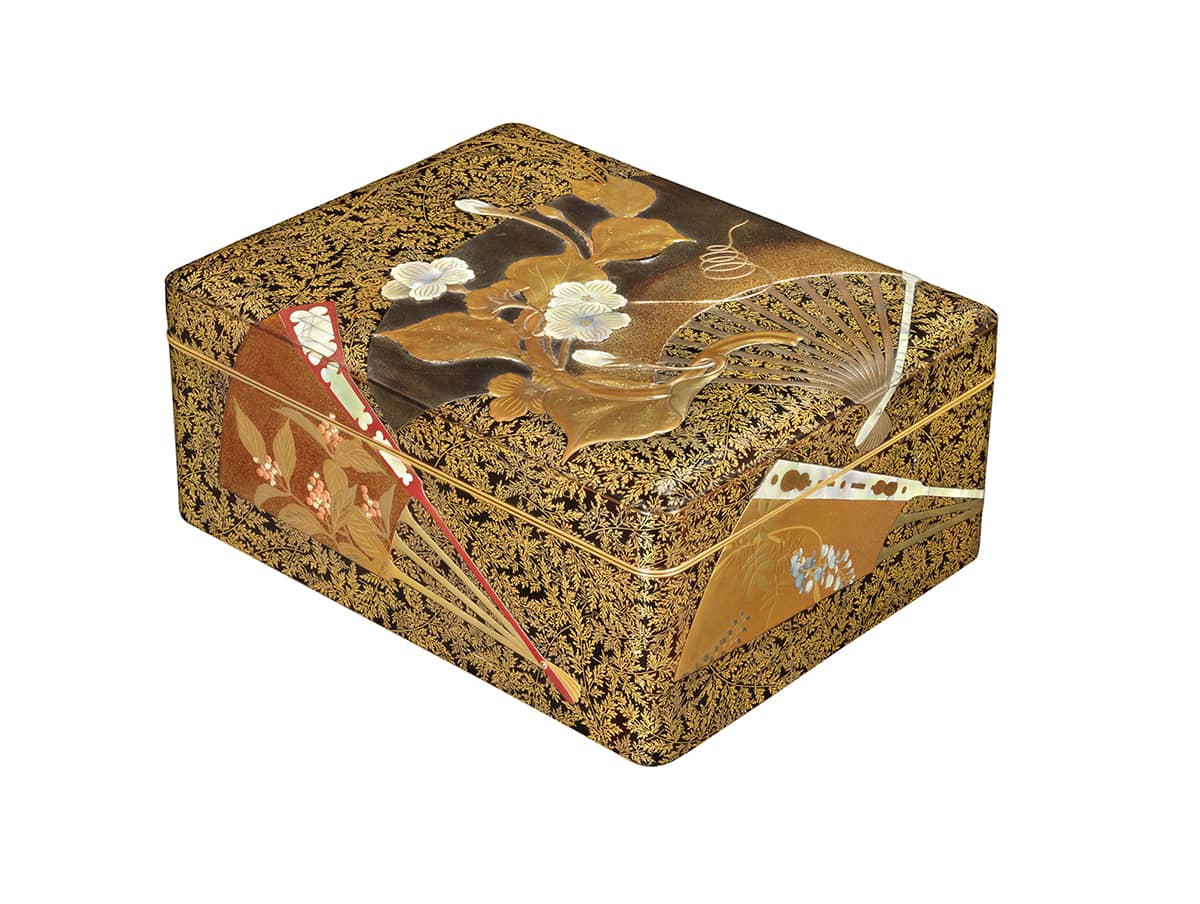Bunko
Lacquer
- Contact Us
-
Material
Gold makie, mother-of-pearl, coral
-
Size
H.17.5cm, W.34cm, L.43cm
-
Period
Showa, 20th century
-
Box
Tomobako (original box), written “Ne-no-hi makie bunko
Description
𝐁𝐮𝐧𝐤𝐨 𝐭𝐲𝐩𝐞 𝐛𝐨𝐱 𝐟𝐨𝐫 𝐛𝐨𝐨𝐤𝐥𝐞𝐭𝐬 𝐰𝐢𝐭𝐡 𝐝𝐞𝐬𝐢𝐠𝐧 𝐨𝐟 “𝐧𝐞-𝐧𝐨-𝐡𝐢”
Inami Kirokusai Ⅱ (1902-1981)
Signed Kirokusai
Inami Kirokusai Ⅱ was an artist of Wajima lacquerware and a son-in-law of the Inami Kirokusai Ⅰ.
He was born in Gifu prefecture and moved to Kanazawa to learn the Kaga-makie lacquerware. After a while, he moved to Wajima and learned at Inami Kirokusai Ⅰ. He is admired as one of the best Wajima lacquerware artist until now. His style is very modern and the technique is very fine.
“Ne-no-hi” is the very first day of the rat in a new year. The Japanese celebrated this day each New Year, wishing the prosperity and longevity. People went out to pick out the small pine branches or young greens, and enjoyed a feast.
Kirokusai Ⅱ was expressed a feast of ne-no-hi with the four fans. He depicted also the seasonal plants on each fan. Flowers or fruits are categorized into the four seasons to make haiku poem in Japan and it is obvious that he depicted a good wish for all the year round.
Spring: Wisteria
Summer: Gourd
Autumn: Bellflower
Winter: Nandina
He used his all technique to finish this work by putting the beautiful materials which colour correspond to each plant. The composition is radical and modern.
The similar stationary box (made in 1940 – Showa 15) is possessed by the Ishikawa Prefectural Wajima Lacquer Museum.
